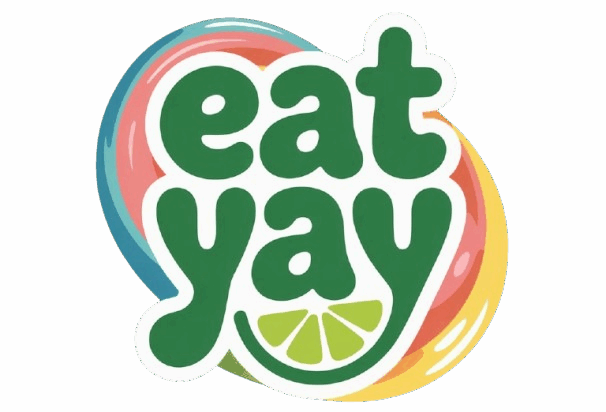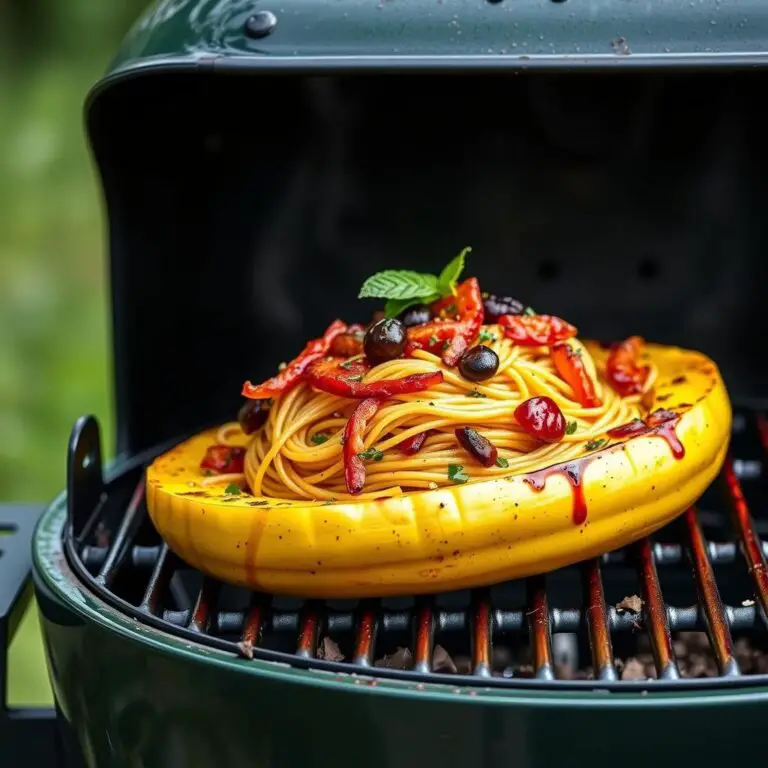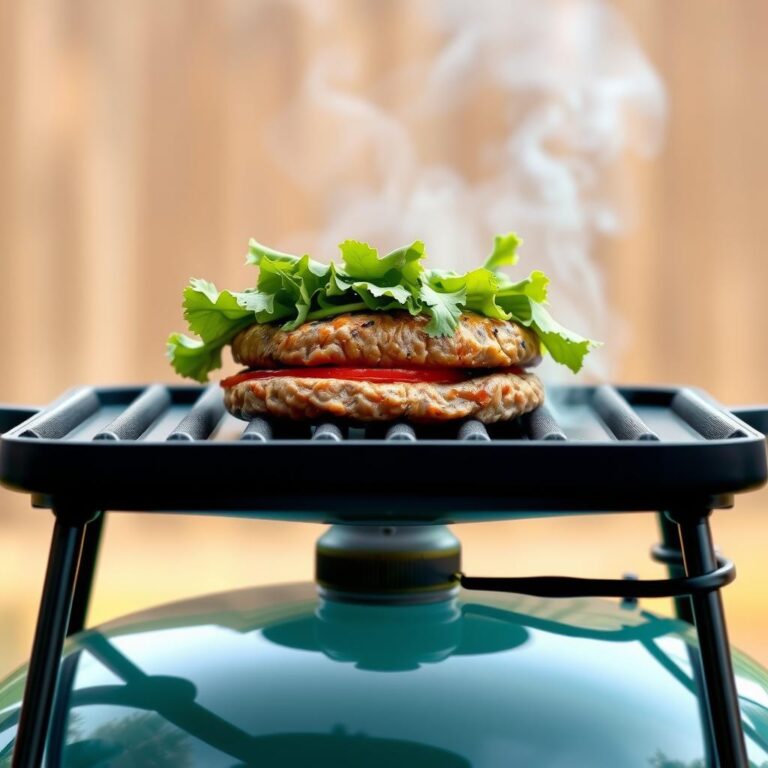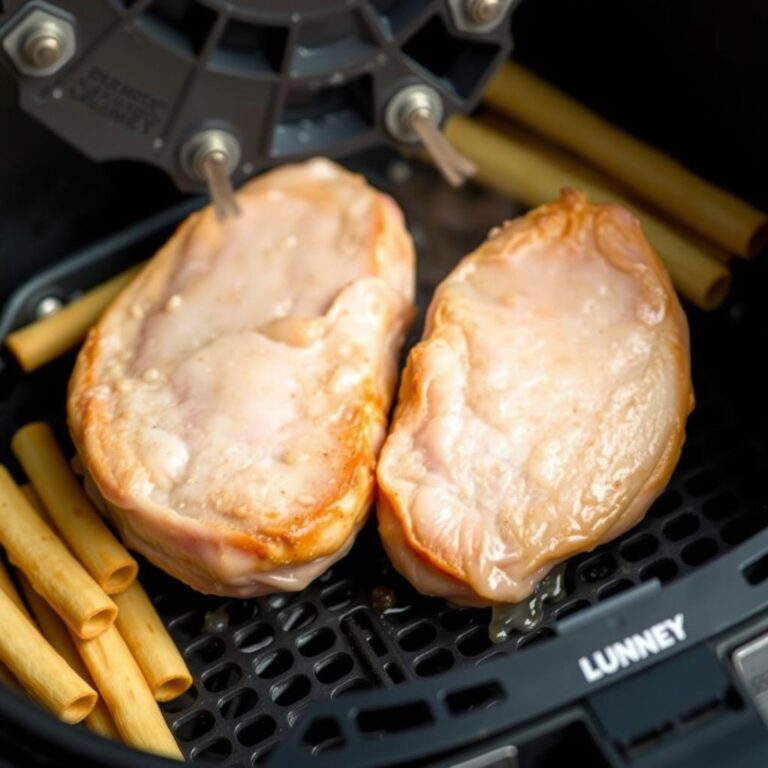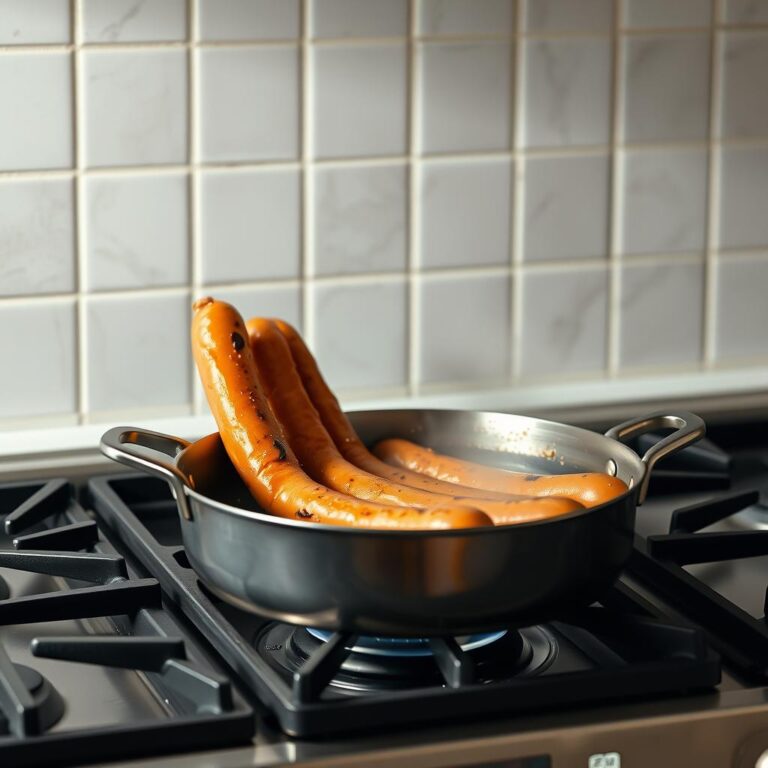Can you cook paella in a cast iron pan? Absolutely.
Paella, a vibrant Spanish rice dish, might seem intimidating, but trust me, cooking paella in a cast iron pan is totally doable.
I'm going to break down why cast iron is a surprisingly awesome choice and how to nail that perfect paella, right in your own kitchen.
Can You Really Cook Paella in Cast Iron? Let's Settle This
So, you're wondering if that trusty cast iron skillet of yours can handle paella.
The answer is a resounding yes, you can cook paella in a cast iron pan!
Cast iron's heat retention and even cooking make it a solid alternative to a traditional paella pan, especially if you don't have one lying around.
Think about it, cast iron skillets are workhorses in the kitchen.
They can go from stovetop to oven without missing a beat, which is clutch for achieving that socarrat – the crispy, caramelized rice at the bottom that's prized in a good paella.
Why Cast Iron is a Paella Powerhouse: The Benefits
Why should you even consider using cast iron for your paella endeavors?
It boils down to a few key advantages:
-
Heat Distribution: Cast iron heats up evenly, minimizing hot spots that could lead to burnt rice. This ensures your paella cooks consistently.
-
Heat Retention: Once hot, cast iron stays hot. This is vital for maintaining a steady simmer and developing that socarrat.
-
Versatility: You can use cast iron on the stovetop, in the oven, or even over a campfire, making it a great option for different cooking scenarios.
-
Durability: A well-seasoned cast iron pan will last for generations, making it a worthwhile investment for any home cook.
The Potential Downsides: Let's Be Real
Okay, cast iron isn't perfect. There are a couple of things to keep in mind:
-
Weight: Cast iron is heavy. A large skillet filled with paella ingredients can be a beast to move around.
-
Maintenance: Cast iron requires proper seasoning and care to prevent rust.
-
Reactivity: Acidic ingredients, like tomatoes or lemon juice, can react with the iron, potentially affecting the flavor of your paella if your pan isn't well-seasoned.
Choosing the Right Cast Iron Pan for Paella: Size Matters
The size of your cast iron pan is crucial for even cooking and proper rice-to-ingredient ratios.
Aim for a pan that's at least 12 inches in diameter for a paella that serves 4-6 people.
A wider pan allows the rice to spread out in a thin layer, which promotes even cooking and socarrat formation.
Consider the depth of the pan as well; a slightly deeper pan can help prevent spills when you add the broth.
Prepping Your Cast Iron Pan: Seasoning is Key
Before you even think about adding ingredients, make sure your cast iron pan is properly seasoned.
A well-seasoned pan has a smooth, non-stick surface that prevents the rice from sticking and burning.
If your pan is new or the seasoning is lacking, consider re-seasoning it before making paella.
This involves coating the pan with a thin layer of oil and baking it in the oven at a high temperature.
Cast Iron Paella Recipe: A Step-by-Step Guide
Alright, let's get to the good stuff. Here's a basic paella recipe adapted for cast iron:
Ingredients:
- 1 tablespoon olive oil
- 1/2 pound chicken thighs, cut into bite-sized pieces
- 1/2 pound chorizo, sliced
- 1 onion, chopped
- 2 cloves garlic, minced
- 1 red bell pepper, chopped
- 1 cup paella rice (Bomba or Calasparra)
- 4 cups chicken broth
- 1/2 teaspoon saffron threads
- 1/2 cup frozen peas
- 1/4 cup chopped parsley
- Salt and pepper to taste
- Lemon wedges for serving
Instructions:
-
Heat the olive oil in your cast iron pan over medium-high heat.
-
Add the chicken and chorizo and cook until browned. Remove from the pan and set aside.
-
Add the onion, garlic, and bell pepper to the pan and cook until softened.
-
Stir in the rice and cook for 1-2 minutes, until lightly toasted.
-
Add the chicken broth and saffron threads. Bring to a boil, then reduce heat to low and simmer uncovered.
-
Arrange the chicken and chorizo on top of the rice.
-
Continue to simmer for about 15-20 minutes, or until the rice is cooked through and the liquid is absorbed. Avoid stirring the paella during this time to encourage socarrat formation.
-
Stir in the frozen peas and parsley.
-
Remove from heat, cover with a clean kitchen towel, and let rest for 5-10 minutes before serving.
-
Serve with lemon wedges and enjoy your delicious cast iron paella.
Tips for Perfect Cast Iron Paella: Nailing the Technique
-
Don't stir too much: Stirring prevents socarrat from forming. Let the rice cook undisturbed.
-
Control the heat: Adjust the heat as needed to maintain a gentle simmer.
-
Use the right rice: Bomba or Calasparra rice are ideal for paella because they absorb a lot of liquid without becoming mushy.
-
Embrace the socarrat: That crispy bottom layer is the hallmark of a great paella. Don't be afraid to let it develop.
Elevate Your Paella: Ingredient Ideas and Variations
Feel free to experiment with different ingredients to create your own signature paella.
Consider adding:
- Seafood: Shrimp, mussels, clams, and calamari are popular additions.
- Vegetables: Artichoke hearts, asparagus, and green beans work well.
- Protein: Rabbit, duck, or even pork can add depth of flavor.
Cleaning Your Cast Iron After Paella: A Gentle Approach
After enjoying your paella, it's important to clean your cast iron pan properly to maintain its seasoning.
Avoid using soap or harsh detergents, as they can strip the seasoning.
Instead, scrape out any remaining food particles and wipe the pan clean with a cloth or paper towel.
If necessary, you can use a mild abrasive, like coarse salt, to remove stubborn bits.
Rinse the pan with hot water and dry it thoroughly.
Place the pan on the stovetop over low heat to ensure it's completely dry, then rub a thin layer of oil over the surface to prevent rust.
Embrace the Cast Iron Paella: A Delicious Adventure
Cooking paella in a cast iron pan is a rewarding experience that allows you to create a restaurant-quality dish in the comfort of your own home.
With a little practice and attention to detail, you'll be whipping up flavorful and impressive paellas that will wow your friends and family.
So, grab your cast iron skillet and get ready to embark on a culinary adventure.
Now you know you can cook paella in a cast iron pan and serve up an amazing dish.
Can you cook paella in a cast iron pan? Absolutely.
Paella, a vibrant Spanish rice dish, might seem intimidating, but trust me, cooking paella in a cast iron pan is totally doable.
I'm going to break down why cast iron is a surprisingly awesome choice and how to nail that perfect paella, right in your own kitchen.
Can You Really Cook Paella in Cast Iron? Let's Settle This
So, you're wondering if that trusty cast iron skillet of yours can handle paella.
The answer is a resounding yes, you can cook paella in a cast iron pan!
Cast iron's heat retention and even cooking make it a solid alternative to a traditional paella pan, especially if you don't have one lying around.
Think about it, cast iron skillets are workhorses in the kitchen.
They can go from stovetop to oven without missing a beat, which is clutch for achieving that socarrat – the crispy, caramelized rice at the bottom that's prized in a good paella.
Why Cast Iron is a Paella Powerhouse: The Benefits
Why should you even consider using cast iron for your paella endeavors?
It boils down to a few key advantages:
-
Heat Distribution: Cast iron heats up evenly, minimizing hot spots that could lead to burnt rice. This ensures your paella cooks consistently.
-
Heat Retention: Once hot, cast iron stays hot. This is vital for maintaining a steady simmer and developing that socarrat.
-
Versatility: You can use cast iron on the stovetop, in the oven, or even over a campfire, making it a great option for different cooking scenarios.
-
Durability: A well-seasoned cast iron pan will last for generations, making it a worthwhile investment for any home cook.
The Potential Downsides: Let's Be Real
Okay, cast iron isn't perfect. There are a couple of things to keep in mind:
-
Weight: Cast iron is heavy. A large skillet filled with paella ingredients can be a beast to move around.
-
Maintenance: Cast iron requires proper seasoning and care to prevent rust.
-
Reactivity: Acidic ingredients, like tomatoes or lemon juice, can react with the iron, potentially affecting the flavor of your paella if your pan isn't well-seasoned.
Choosing the Right Cast Iron Pan for Paella: Size Matters
The size of your cast iron pan is crucial for even cooking and proper rice-to-ingredient ratios.
Aim for a pan that's at least 12 inches in diameter for a paella that serves 4-6 people.
A wider pan allows the rice to spread out in a thin layer, which promotes even cooking and socarrat formation.
Consider the depth of the pan as well; a slightly deeper pan can help prevent spills when you add the broth.
Prepping Your Cast Iron Pan: Seasoning is Key
Before you even think about adding ingredients, make sure your cast iron pan is properly seasoned.
A well-seasoned pan has a smooth, non-stick surface that prevents the rice from sticking and burning.
If your pan is new or the seasoning is lacking, consider re-seasoning it before making paella.
This involves coating the pan with a thin layer of oil and baking it in the oven at a high temperature.
Cast Iron Paella Recipe: A Step-by-Step Guide
Alright, let's get to the good stuff. Here's a basic paella recipe adapted for cast iron:
Ingredients:
- 1 tablespoon olive oil
- 1/2 pound chicken thighs, cut into bite-sized pieces
- 1/2 pound chorizo, sliced
- 1 onion, chopped
- 2 cloves garlic, minced
- 1 red bell pepper, chopped
- 1 cup paella rice (Bomba or Calasparra)
- 4 cups chicken broth
- 1/2 teaspoon saffron threads
- 1/2 cup frozen peas
- 1/4 cup chopped parsley
- Salt and pepper to taste
- Lemon wedges for serving
Instructions:
-
Heat the olive oil in your cast iron pan over medium-high heat.
-
Add the chicken and chorizo and cook until browned. Remove from the pan and set aside.
-
Add the onion, garlic, and bell pepper to the pan and cook until softened.
-
Stir in the rice and cook for 1-2 minutes, until lightly toasted.
-
Add the chicken broth and saffron threads. Bring to a boil, then reduce heat to low and simmer uncovered.
-
Arrange the chicken and chorizo on top of the rice.
-
Continue to simmer for about 15-20 minutes, or until the rice is cooked through and the liquid is absorbed. Avoid stirring the paella during this time to encourage socarrat formation.
-
Stir in the frozen peas and parsley.
-
Remove from heat, cover with a clean kitchen towel, and let rest for 5-10 minutes before serving.
-
Serve with lemon wedges and enjoy your delicious cast iron paella.
Tips for Perfect Cast Iron Paella: Nailing the Technique
-
Don't stir too much: Stirring prevents socarrat from forming. Let the rice cook undisturbed.
-
Control the heat: Adjust the heat as needed to maintain a gentle simmer.
-
Use the right rice: Bomba or Calasparra rice are ideal for paella because they absorb a lot of liquid without becoming mushy.
-
Embrace the socarrat: That crispy bottom layer is the hallmark of a great paella. Don't be afraid to let it develop.
Elevate Your Paella: Ingredient Ideas and Variations
Feel free to experiment with different ingredients to create your own signature paella.
Consider adding:
- Seafood: Shrimp, mussels, clams, and calamari are popular additions.
- Vegetables: Artichoke hearts, asparagus, and green beans work well.
- Protein: Rabbit, duck, or even pork can add depth of flavor.
Cleaning Your Cast Iron After Paella: A Gentle Approach
After enjoying your paella, it's important to clean your cast iron pan properly to maintain its seasoning.
Avoid using soap or harsh detergents, as they can strip the seasoning.
Instead, scrape out any remaining food particles and wipe the pan clean with a cloth or paper towel.
If necessary, you can use a mild abrasive, like coarse salt, to remove stubborn bits.
Rinse the pan with hot water and dry it thoroughly.
Place the pan on the stovetop over low heat to ensure it's completely dry, then rub a thin layer of oil over the surface to prevent rust.
Embrace the Cast Iron Paella: A Delicious Adventure
Cooking paella in a cast iron pan is a rewarding experience that allows you to create a restaurant-quality dish in the comfort of your own home.
With a little practice and attention to detail, you'll be whipping up flavorful and impressive paellas that will wow your friends and family.
So, grab your cast iron skillet and get ready to embark on a culinary adventure.
Now you know you can cook paella in a cast iron pan and serve up an amazing dish.
Troubleshooting Common Issues When Cooking Paella in Cast Iron
Sometimes things don't go exactly as planned when you cook paella in a cast iron pan.
Let's tackle some common hiccups and how to fix them.
Rice is Sticking:
- Problem: Your pan might not be seasoned well enough, or the heat is too high.
- Solution: Make sure your cast iron skillet has a solid seasoning, if you don't have a well seasoned pan consider re-seasoning it, turn the heat down a notch, and add a touch more olive oil.
Socarrat Isn't Forming:
- Problem: You might be stirring too much, or there's too much liquid.
- Solution: Resist the urge to stir! Let the rice hang out and do its thing, also keep an eye on the liquid level, if it's soupy, crank up the heat a bit for the last few minutes to evaporate excess moisture.
Paella is Cooking Unevenly:
- Problem: Your cast iron skillet might have hot spots, or your stovetop's heat distribution isn't great.
- Solution: Rotate the pan occasionally to even things out, you can also use an oven-safe cast iron pan and finish the paella in the oven for more consistent heat.
Paella Tastes Metallic:
- Problem: Acidic ingredients reacting with the cast iron.
- Solution: Make sure your pan is well-seasoned. A good seasoning acts as a barrier, also, don't let acidic ingredients simmer for too long in the pan.
Alternatives to Cast Iron for Paella: Exploring Other Options
While cast iron is a solid choice, you might be wondering about other pans.
Let's check out some alternatives:
-
Traditional Paella Pan: The classic choice, these pans are wide and shallow, perfect for even cooking and socarrat development.
-
Stainless Steel Pan: Stainless steel offers good heat distribution, but it doesn't retain heat as well as cast iron.
-
Carbon Steel Pan: Similar to cast iron, carbon steel is lighter and heats up quickly, it's a good option if you want something less heavy.
Essential Tools for Cast Iron Paella Success
Having the right tools makes cooking paella in cast iron even easier.
Here's what I recommend:
- A Good Spatula: A flat, wide spatula is perfect for scraping up that delicious socarrat.
- Tongs: Essential for adding and arranging ingredients.
- Oven Mitts: Cast iron gets hot so good oven mitts are essential.
- A Lid or Foil: Useful for steaming the paella at the end.
Understanding Paella Rice: The Foundation of Flavor
Paella rice is a game-changer.
Bomba and Calasparra are the top choices.
They soak up tons of liquid without getting mushy.
If you can't find them, medium-grain rice works in a pinch, but keep a close eye on the liquid.
Seasoning Secrets: Building Depth of Flavor in Your Paella
Saffron is the soul of paella.
A little goes a long way, blooming it in warm broth unlocks its flavor and color.
Smoked paprika adds depth, and don't skimp on fresh herbs like rosemary or thyme.
Socarrat Strategies: Achieving Paella Perfection
That crispy bottom layer is the holy grail.
Resist stirring, and let the rice toast undisturbed.
Listen for a crackling sound – that's your cue that the socarrat is forming.
If needed, nudge the heat up a tad at the end.
Beyond the Basics: Creative Cast Iron Paella Variations
Once you nail the classic, get creative:
-
Seafood Extravaganza: Load it up with shrimp, mussels, clams, and scallops.
-
Veggie Power: Artichokes, asparagus, and roasted red peppers add color and flavor.
-
Meat Lover's Delight: Chorizo, chicken, and rabbit create a hearty paella.
Storing and Reheating Leftover Cast Iron Paella
Got leftovers? Lucky you! Store it in an airtight container in the fridge.
To reheat, add a splash of broth to keep it moist, and warm it gently in a pan or microwave.
FAQ About Cooking Paella in Cast Iron
Can I use any type of cast iron pan for paella?
A cast iron skillet is ideal due to its wide, shallow shape, but a Dutch oven can work too, though the socarrat might not be as pronounced.
Do I need to season my cast iron pan before making paella?
Yes! A well-seasoned pan is crucial for preventing sticking and ensuring even cooking.
How do I prevent my paella from burning in a cast iron pan?
Control the heat, don't stir too much, and make sure your pan is properly seasoned.
Can I make paella in cast iron on a grill?
Absolutely! Cast iron is perfect for grilling. Just be mindful of the heat.
Is it okay to use metal utensils with my cast iron paella?
Yes, but be gentle to avoid scratching the seasoning.
Final Thoughts: Embrace the Cast Iron Paella Adventure
Cooking paella in a cast iron pan is not just doable.
It's a fantastic way to bring the flavors of Spain to your table, your cast iron skillet becomes a vessel for creating a memorable meal.
So go ahead, grab your cast iron, gather your ingredients, and get ready to create paella that will impress.
With these tips and tricks, you are more than ready to answer the question, can you cook paella in a cast iron pan, with a confident "Yes, I can!"
“`html
“`
